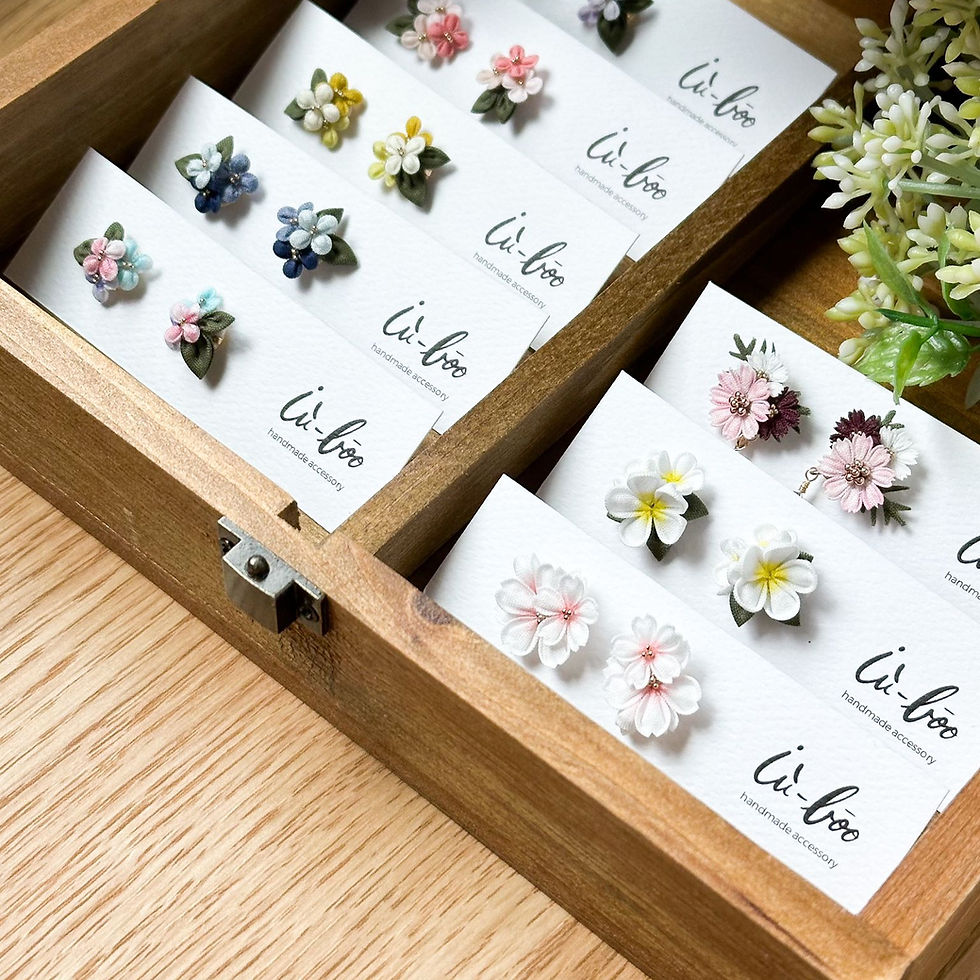

Tsumami zaiku accessories
About Fabric
Fabric type
There are two types of kimono: yarn-dyed, in which the threads are dyed first and the fabric is woven, and post-dyed, in which the white fabric is dyed. “Tsumugi” is a silk fabric that is dyed at the thread stage and then woven (yarn-dyed). It is made of a yarn that is not homogeneous, with thick and thin threads, knots, etc., and the texture is a little stiff and strong. “Ohjima” is also a type of silk pongee, which is yarn-dyed silk fabric without knots. Because it is woven with raw silk, the fabric is shiny and smooth to the touch. The fabric of tsumugi is simple and has a subdued coloring. Unlike ordinary silk, “silk” in kimono fabric refers to 100% natural silk woven from raw silk extracted from silkworm cocoons. Natural silk is soft to the skin, smooth to the touch, and has a beautiful luster. In yarn-dyed silk, the pattern of the fabric is the same on both the front and back sides, but since silk is dyed afterwards, the pattern is different on the front and back sides.
Access
It is also sold in our physical shop. Please visit us when you come to Tokyo Asakusa.
〒111-0033 1-10-11 Hanakawado, Taito-ku, Tokyo Yagai Building 4F
Located near MIMARU SUITES Hotel Tokyo Asakusa, behind the parking lot. Take the elevator to the 4th floor.
3 minute walk from Asakusa Station on the Metro Ginza Line (Exit 7), 1 minute walk from Asakusa Station on the Tobu Skytree Line (North Exit), 3 minute walk to Sensoji Temple.
* If you have any questions, please contact us via chat.











